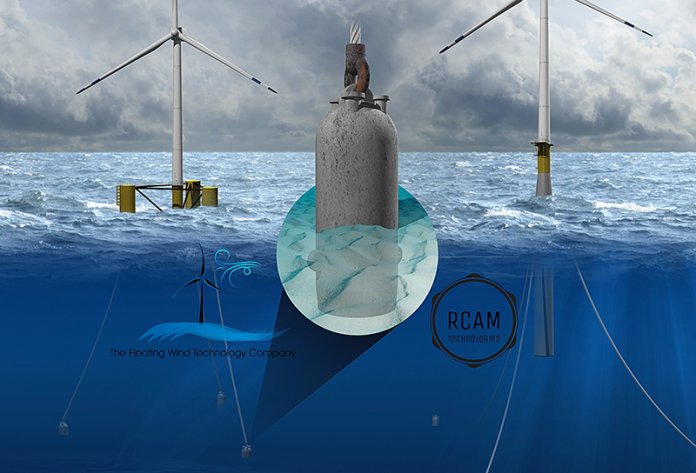Purdue University engineers are conducting research on a way to make offshore wind turbine parts out of 3D-printed concrete, a less expensive material that would also allow parts to float to a site from an onshore plant.
“One of the current materials used to manufacture anchors for floating wind turbines is steel,” says Pablo Zavattieri, professor at Purdue’s Lyles School of Civil Engineering. “However, finished steel structures are much more expensive than concrete.”
Conventional concrete manufacturing methods also require a mold to shape the concrete into the desired structure, which adds to costs and limits design possibilities. 3D printing would eliminate the expenses of this mold.
The researchers are working in collaboration with RCAM Technologies, a startup founded to develop concrete additive manufacturing for onshore and offshore wind energy technology. RCAM Technologies has an interest in building 3D-printed concrete structures, including wind turbine towers and anchors. The work also is funded by the National Science Foundation INTERN program.
The team is developing a method that would involve integrating a robot arm with a concrete pump to fabricate wind turbine substructures and anchors. This project is a continuation of the team’s research on 3D-printing cement-based materials into bio-inspired designs, such as ones that use structures mimicking the ability of an arthropod shell to withstand pressure.
The group’s current research involves scaling up their 3D printing by formulating a special concrete – using a mixture of cement, sand and aggregates, and chemical admixtures to control shape stability when concrete is still in a fresh state.
The goal is to understand the feasibility and structural behavior of 3D-printed concrete produced on a larger scale than what the team has previously studied in the lab. The researchers will determine how gravity affects the durability of the larger-scale 3D-printed structure. The scaling up research could also be applied to optimizing and reinforcing structures in general.




